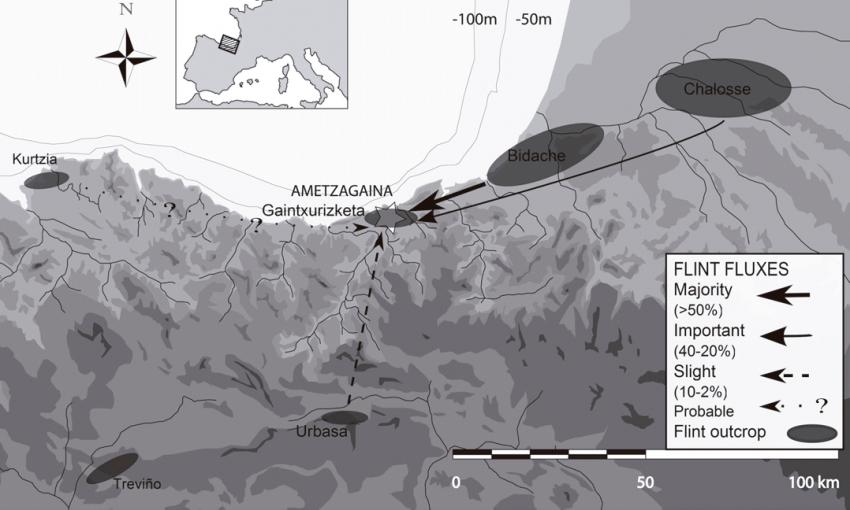About 25,000 years ago, in the Late Stone Age, a group of Cro-Magnons established a campsite at modern-day San Sebastian, and kept it running for a few thousand years, as shown by the remains of the open-air site found in Ametzagaina Park in the Gipuzkoan capital. That would make them the oldest citizens of this Belle Epoque city.
The site was located by the Aranzadi Sciences Society. This Society has carried out a lot of research over the past six years, leading to an article being published in the “Journal of Anthropological Research“, which explores what the economic area these nomadic societies exploited was like, thanks to a piece of flint chosen to carry out their neolithic work.
We can see how, even 25,000 years ago, economic activity was spread out over a wide area. It’s not easy to imagine nowadays how those groups of Cro-Magnons moved such far distances, but they did. It’s even more amazing when you remember that these movements were not just in search of better materials for weapons, but also determined their area of economic activity, so, hunting, fishing, collecting, and social life.
Archeology – 21/7/2014 – USA
Flint Tools Tell Story of Economic Territory
The study of flint remains from the Ametzagaina site has revealed the economic territory of the people who made temporary camps there over a period of about 2,000 years some 25,000 years ago. Most open-air sites do not survive, but Ametzagaina was protected by earthworks dug in the nineteenth century during the Carlist Wars.
(Follow) (Automatic activity)
———————————–
Phys – 21/7/2014 -USA
The economic territory of Upper Palaeolithic groups is specified by flint

Never before had the mobility patterns and management of lithic resources in the Upper Palaeolithic been determined so precisely. The study of flint remains found in the open-air Ametzagaina site in Donostia-San Sebastian has determined the economic territory of the human groups that lived there for about 2,000 years. The paper, Where to and What for? Mobility Patterns and the Management of Lithic Resources by Gravettian Hunter-Gatherers in the Western Pyrenees, has been published in the Journal of Anthropological Research.
(Follow) (Automatic translation)
Last Updated on Apr 18, 2021 by About Basque Country




























